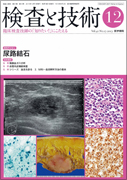1)Svenson M, Hansen MB, Ross C, et al : Antibody to granulocyte-macrophage colony-stimulating factor is a dominant anti-cytokine activity in human IgG preparations. Blood 91:2054-2061,1998
2)Uchida K, Nakata K, Suzuki T, et al : Granulocyte/macrophage-colony-stimulating factor autoantibodies and myeloid cell immune functions in healthysubjects. Blood 113:2547-2556,2009
3)Watanabe M, Uchida K,Nakagaki K, et al : Anti-cytokine autoantibodies are ubiquitous in healthy individuals. FEBS Lett 581:2017-2021,2007
4)Hellmich B, Csernok E, Schatz H, et al : Autoantibodies against granulocyte colony-stimulating factor in Felty's syndrome and neutropenic systemic lupus erythematosus. Arthritis Rheum 46:2384-2391,2002
5)Casadevall N : Antibodies against rHuEPO : native and recombinant. Nephrol Dial Transplant 17 Suppl 5:42-47,2002
6)Browne SK, Burbelo PD, Chetchotisakd P, et al : Adult-onset immunodeficiency in Thailand and Taiwan. N Engl J Med 367:725-734,2012
7)Tanaka N, Watanabe J, Kitamura T, et al : Lungs of patients with idiopathic pulmonary alveolar proteinosis express a factor which neutralizes granulocyte-macrophage colony stimulating factor. FEBS Lett 442:246-250,1999
8)Kitamura T, Tanaka N, Watanabe J, et al : Idiopathic pulmonary alveolar proteinosis as an autoimmune disease with neutralizing antibody against granulocyte/macrophage colony-stimulating factor. J Exp Med 190:875-880,1999
9)Inoue Y, Trapnell BC, Tazawa R, et al : Characteristics of a large cohort of patients with autoimmune pulmonary alveolar proteinosis in Japan. Am J Respir Crit Care Med 177:752-762,2008
10)Uchida K, Nakata K,Trapnell BC, et al : High-affinity autoantibodies specifically eliminate granulocyte-macrophage colony-stimulating factor activity in the lungs of patients with idiopathic pulmonary alveolar proteinosis. Blood 103:1089-1098,2004
11)Sakagami T, Uchida K, Suzuki T, et al : Human GM-CSF autoantibodies and reproduction of pulmonary alveolar proteinosis. N Engl J Med 361:2679-2681,2009
12)Kitamura T, Uchida K, Tanaka N, et al : Serological diaganosis of idiopathic pulmonary alveolar proteinosis. Am J Respir Crit Care Med 162:658-662,2000
13)Schoch OD, Schanz U, Koller M, et al : BAL findings in a patient with pulmonary alveolar proteinosis successfully treated with GM-CSF. Thorax 57:277-280,2002
14)Urano S, Kaneko C, Nei T, et al : A cell-free assay to estimate the neutralizing capacity of granulocyte-macrophage colony-stimulating factor autoantibodies. J Immunol Methods 360:141-148,2010
15)Trapnell BC, Nakata K, Kavuru M : Pulmonary Alveolar Proteinosis. Mason RJ, Broaddus VC, MartinTR, et al(ed) : Murray & Nadel's Textbook of Respiratory. Medicine Saunders Elsevier, pp1496-1515,2010
16)Nei T, Urano S, Motoi N, et al : IgM-type GM-CSF autoantibody is etiologically a bystander but associated with IgG-type autoantibody production in autoimmune pulmonary alveolar proteinosis. Am J Physiol Lung Cell Mol Physiol 302:L959-L964,2012
17)Nei T, Urano S, Motoi N, et al : Light chain (κ/λ) ratio of GM-CSF autoantibodies is associated with disease severity in autoimmune pulmonary alveolar proteinosis. Clin Immunol (in press)
18)Ishii H, Trapnell BC, Tazawa R, et al : Comparative study of high-resolution CT findings between autoimmune and secondary pulmonary alveolar proteinosis. Chest 136:1348-1355,2009
19)Suzuki T, Sakagami T, Young LR, et al : Hereditary pulmonary alveolar proteinosis : pathogenesis, presentation, diagnosis, and therapy. Am J Respir Crit Care Med 182:1292-1304,2010
20)Tanaka T, Motoi N, Tsuchihashi Y, et al : Adult-onset hereditary pulmonary alveolar proteinosis caused by a single-base deletion in CSF2RB. J Med Genet 48:205-209,2011
21)Rosen LB, Freeman AF, Yang LM, et al : Anti-GM-CSF autoantibodies in patients with cryptococcal meningitis. J Immunol 190:3959-3966,2013
22)Meager A, Wadhwa M, Bird C, et al : Spontaneously occurring neutralizing antibodies against granulocyte-macrophage colony-stimulating factor in patients with autoimmune disease. Immunology 97:526-532,1999
23)Han X, Uchida K, Jurickova I, et al : Granulocyte-macrophage colony-stimulating factor autoantibodies in murine ileitis and progressive ileal Crohn's disease. Gastroenterology 136:1261-1271,2009
1)田澤立之,中田光:肺胞蛋白症 基礎から臨床まで.呼と循 57:1147-1154,2009
2)田澤立之,中田光:肺胞蛋白症.日胸臨 69:734-740,2010
3)中田光,根井貴仁,中垣和英:特殊病態 自己抗体の分子進化と肺胞蛋白症.綜合臨 60:2494-2499,2011

